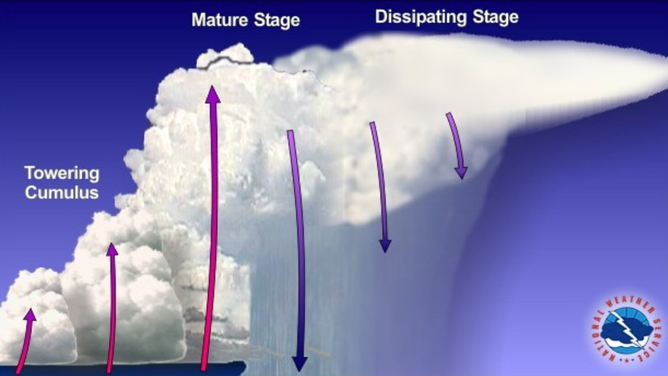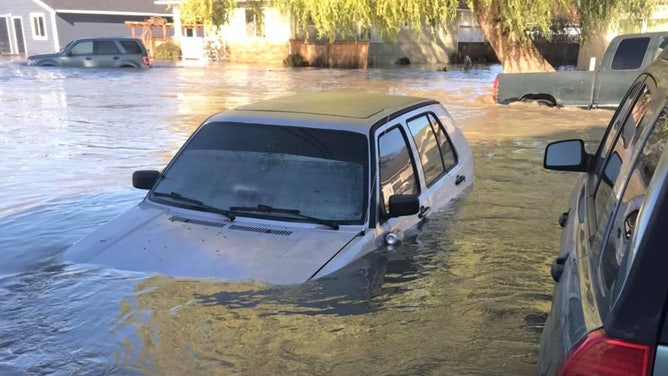What are training thunderstorms, and why are they so dangerous?
This weather pattern is dangerous because having that much rainfall over a short amount of time can oversaturate the ground and then cause flash flooding.
FOX Weather Explains: Supercells
FOX Weather meteorologist Steve Bender explains the anatomy of a supercell.
Flooding is the deadliest weather hazard apart from heat, with the yearly national average for flood deaths over the past three decades being 88, according to NOAA. For context, tornadoes caused an average of 68 deaths, and lightning caused an average of 41 deaths annually.
Flash floods happen when a lot of rain falls in a short period of time or when excessive rain continues to fall in the same area. Training thunderstorms often produce flash flooding, as these storms produce tremendous rainfall over the same area.

Read this graphic from left to right to see the stages of a training echo or storm train. On the left is the first stage, in which pink arrows indicate an updraft forming a towering cumulus cloud, or thunderstorm cell. The middle section of the graphic shows the Mature Stage, in which purple arrows pointing downward show a thunderstorm cell dropping rainfall. The last section of the graphic shows the Dissipating Stage, in which the cumulus cloud is pushed away and dissipated by upper level winds.
(NOAA / FOX Weather)
With training thunderstorms, a thunderstorm cell drops an amount of rain over an area, is pushed away from the area by upper-level winds and dissipates. Then, a new thunderstorm cell forms and takes the original cell's place, essentially backfilling the vacated area left behind by the original cell.
This new thunderstorm cell produces more rain over the area that has already experienced rain from the first cell. It, too, is then pushed away by upper-level winds and replaced by another cell. Depending on the atmospheric conditions at the time, this process may repeat multiple times and quickly.
7 FACTS YOU SHOULD KNOW ABOUT FLASH FLOODS
This repeating formation is similar to actual trains in that the trains follow the same path and continuously move on the same tracks.

Flooding in Sumas, Wash.
(City of Sumas, Wash. / FOX Weather)
This weather pattern is quite dangerous because having multiple thunderstorm cells taking turns dropping large amounts of rainfall on one area over a short period of time can oversaturate the ground, which leads to flash flooding.
The amount of rainfall produced by training thunderstorms can be significant. According to NOAA, in 1972, the weather pattern dropped about 15 inches of rain in six hours over parts of Rapid City, South Dakota.
The deadly nature of floods has largely to do with most people failing to recognize how powerful flood water can be, NOAA noted. For example, six inches of fast-moving flood water can knock a person off of their feet, and 12 inches can carry a car downstream.
